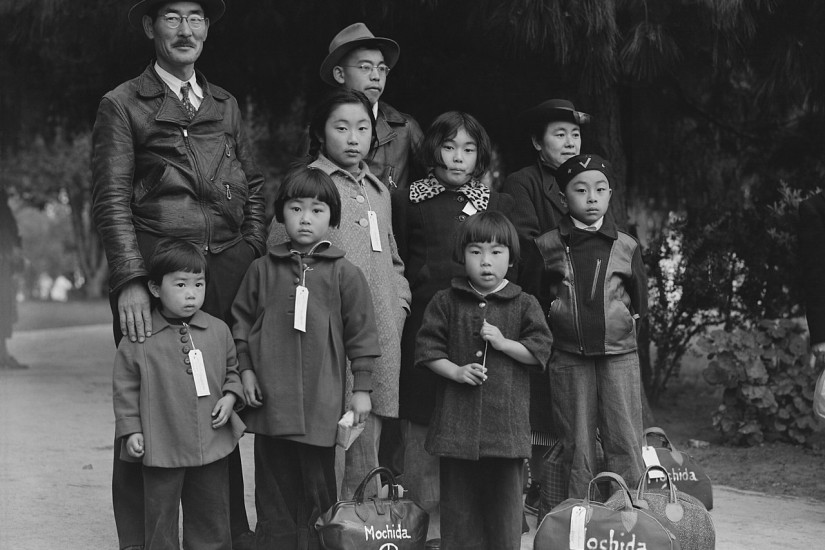The Civil Liberties Act of 1988, the culmination of a multigenerational fight to attain recognition and redress for those who had been incarcerated, allowed for reparations. Eighty-two thousand two hundred and nineteeen Japanese American citizens and legal residents each received $20,000 from the United States government as recompense for what they had lost. Or, because “loss” is, in this case, a euphemism for “theft,” they received restitution for a fraction of what had been stolen. My grandmother (Nisei, or second generation, who lived, during the war, in Utah, and therefore avoided incarceration) used my grandfather’s reparations to pay for one year’s rent at the nursing home where he spent the last years of his life. The check came with a boilerplate apology from President George H.W. Bush: “You and your family have our best wishes for the future,” it said. Five years later, my grandfather was dead.
The silence in which he passed suggested, to me, that the price of citizenship was forgetting, and that forgetting was annihilative. Yet his death released in me a torrent of questions about his struggle to become a citizen, and exposed the gravity of my citizenship as both the legacy and the purgatorial afterlife of his experience as an enemy alien. My grandfather struggled his entire life to establish for himself and his family a place in the American scenario, and achieved some version of that place, but at the expense of permitting himself an understanding of the American scenario as a myth predicated on the extinguishing of souls.
Today’s migrant concentration camps are incontestable proof of the myth, and of the extinguishing. The migrant children—many of whom crossed the US-Mexico border with family members, half of them with parents already in the United States, and yet who are classified as unaccompanied minors—are proof. What happens to migrant children in a place like Fort Sill? What happened there to the generations of indigenous children, to the Chiricahua Apaches, to the Japanese immigrants? What is happening in the concentration camps and prisons and jails and incarceration and detention sites that extend across the country?
Concentration camps are basic units of space the United States has devised for the populations it sees as unassimilable, incongruous with—and threatening to—its self-image. Concentration camps can be, and have been, invented, at will, from sites—military bases to empty box stores—retained for use in the event of a crisis, sometimes real, though more often manufactured. They are outposts of the border wall, therefore materializations of the white settler hatred and rage by which the border wall, and its innumerable chimeras, are motivated. And we are, right now, watching the United States resurrect, with frightening ease, its system of concentration camps, and all the crimes against humanity such a system entails. With this resurrection, the government is coordinating, in the digestible guise of bureaucratic chaos, the disintegration of communities, families, individuals, languages, cultures, physical and mental health, futures. Reliant upon the prevention-through-deterrence method of control, this approach to migration should be considered a form of ethnic cleansing by attrition.
